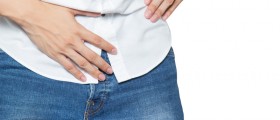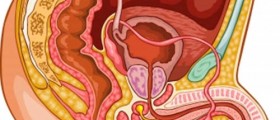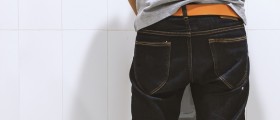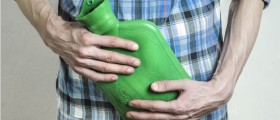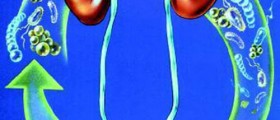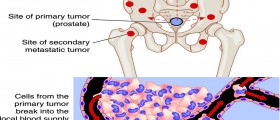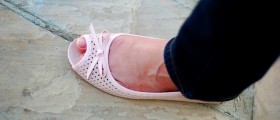Loading...
That is a major reason to follow advances in BPH procedures.
Loading...
In my opinion is not a trade off but price to pay to save the bladder possibly kidney.
Loading...
The complication of having “less intensity” after HoLEP is not addressed on Peter Giling’s website that prepares the patient before HoLEP.
See:
urobop.co.nz/our-services/id/66
.......
“Are there any untoward effects after surgery, especially on my sex life?
This is the main fear that most men have with this operation. Approximately 10% of men may have a change in their potency (ability to have sexual intercourse). However, in the vast majority of cases the ability to have an erection and reach climax is not affected. One effect that must be accepted with this surgery is that you may have dry ejaculations. This is because one of the jobs of the prostate is to prevent the semen entering the bladder during ejaculation. After prostate tissue removal, the semen can pass freely back into the bladder, this is called retrograde ejaculation. This is completely harmless and does not affect your health in any way, it would only be a concern to men wanting to father children in the future. Up to 90% of patients may experience retrograde ejaculations, however the operation should never be regarded as a sterilisation procedure. If you are aware of these possibilities, your enjoyment of sex should not diminish and may well improve after surgery due to your other bothersome symptoms being resolved.”
Loading...
Loading...
The effect of BPH on sexual functions after a BPH surgery is rather convoluted. The effect is buried in answers to a long form, called Male Sexual Health Questionnaire (MSHQ), rated in points.
I look thru this questionnaire. It does not have a question about “intensity”, really odd.
See
eprovide.mapi-trust.org/content/download/28388/283522/version/1/file/MSHQ_AU1.0_eng-US_ReviewCopy.pdf
Loading...
It seems to me that Urologists minimize the side effects without having experienced them
Loading...
Loading...
I would appreciate help in removing my catheter.
Everyone recovers differently. I made an error in judgement. After holep, I had my catheter removed in one day. That error made me suffer so much and so miserably. Without the catheter, voiding tests were performed several times, all indicated that my urine retention, PVR, was more than 500cc. The nurse practitioner for dr. Das said that I should put back in the catheter for 4 more days else I most likely would need to go to ER. No choice, the nurse reinserted the catheter. Also, after the catheter was first removed, my blood pressure dropped to 80 and almost fell to the floor trying to urine.
I watched YouTube videos. It seems that the catheter is very easy to remove. The inputs are two rubber tubes joined in the shape of a ‘V’. One of the tube is used to inflate the balloon located at the bladder neck. The nurse used a syringe to inject water to inflate the balloon. There is a plastic plug at the input of the tube to prevent water from leaking out thus deflate the balloon. The plug is not accessible except by syringe.
To deflate the ballon, the same syringe is used to suck out the water. I don’t have the syringe. YouTube video showed that I could simply cut the rubber tubing beyond the plug. Without the plug, the water will leak out and as a result the balloon will then be deflated. It seems that there is absolutely no risk and removal by a professional is not absolutely necessary.
If I could remove the catheter by myself, it would save me the ordeal of 2 hr driving to Philadelphia, park car and wait in the waiting room with the urine back hanging. Also, with the catheter in the bladder the vibration of car ride is punishably uncomfortable.
Your help in confirming the risk and sharing your experience in removing the catheter will be greatly appreciated
Loading...
Loading...
By the way, I think the nurses at Jefferson hospital offered me first rate care. Very attentive, Checked on me constantly. Spent a lot of time teaching me how to change and care for the catheter. Also dr das came to the hospital room to talk to me after Holep . Not sure anyone could ask for more.
HoLEP was Monday and I won’t be taking out the catheter until Friday. Yes, local urologist is an option. Thanks for the suggestions! I will look into it.
Loading...
I will follow Blayneb’s advice to go to a local urology office to remove the catheter. The advantages is that the nurse could check residual after voiding. Then I will be sure I don’t have retention problem.
(A) and (B) Below are two pieces of useful info that I have found from google search.
A) WakeMed: Removing catheter at home
wakemed.org/urology-catheter-removal-instructions
Catheter Removal Instructions
The urinary catheter is frequently called a “Foley.” This is because it is named after its inventor, the famous Minnesota Urologist Dr. Frederick Foley. There are many different varieties and sizes, but the basic principles are the same. It is a rubber or silicone drainage tube with retention balloon on the tip. The retention balloon holds it in the bladder so urine can drain out and collect in a collection bag (see diagram below). It is a closed system to decrease the chances of infection developing.
Most patients are able to remove his or her catheter at home.
This is perfectly safe and avoids an unnecessary trip to the office.
Follow these steps to remove it.
Identify the “Balloon Port” at the end of the catheter (see the diagram). It has a colored valve on the end and has several numbers printed on the colored valve. This is the part of the catheter that holds the water in the retention balloon at the tip, which inside your bladder.
Cut the valve off the “Balloon Port”. Do this by cutting the neck of the tube just behind the valve. The valve will come off and water will trickle out of the tube. This is clean water that was inside the balloon at the tip of the catheter.
Wait for all the water to trickle out. When it stops, the balloon inside your bladder has been deflated.
Pull the entire catheter out with a steady pull. Do not jerk it or yank it out – if you do, it will come out but will be more uncomfortable.
Throw all the tubing and the collection bag away.
Tips from experienced patients:
Lubricating the catheter with KY jelly helps reduce discomfort.
Removing the catheter in the shower with warm water running on you makes it much less uncomfortable (and it make less of a mess). If you do this, we suggest doing it seated to avoid falling or injury.
B) good background knowledge on catheter
nursingtimes.net/clinical-archive/continence/urinary-catheters-6-removing-an-indwelling-urinary-catheter/7017977.article
Urinary catheters 6: removing an indwelling urinary catheter
15 MAY, 2017
Introduction
Urinary catheterisation is associated with a number of complications including catheter-associated urinary tract infection (CAUTI), tissue damage, and bypassing and blockage. The risk of complications means catheters should only be used after considering other continence management options, and should be removed as soon as clinically appropriate (Loveday et al, 2014).
It is important to understand the reason for removal and whether the catheter is being removed permanently or in a planned or unplanned change due to problems encountered by the patient, such as a blocked catheter. The procedure differs depending on whether the insertion site is urethral or suprapubic.
The removal of a urinary catheter should be a simple, uncomplicated procedure but there are recognised competencies. Nurses removing a catheter must be aware of:
Local policies and procedure;
Anatomy and physiology of the genitourinary system (Figs 1 and 2);
Care of the patient before, during and after removal;
What action to take if they encounter a problem;
Infection prevention and control issues relating to catheter care;
The balloon mechanism used to retain catheters in the bladder (Box 1 and Fig 3a).
Fig 1. Male genitourinary tract
Fig 2. The female genitourinary tract
Box 1. Foley catheters
Foley catheters have an inflatable balloon that anchors the catheter in the bladder. The catheter has two channels – one drains urine while the other is used to inflate and deflate the balloon.
Balloons are inflated with sterile water/or using liquid in syringes supplied by manufacturers. The water is usually inserted and removed using a syringe that is attached to a valve on the catheter.
Balloons vary in size but adults usually require a 5-10ml balloon. Always check manufacturers’ instructions. Balloons must not be overinflated as they can rupture, leaving fragments in the bladder (Dougherty and Lister, 2015).
Patient anxiety
Patients may be anxious about pain and discomfort during the procedure, and about passing urine afterwards. In particular, those who have previously failed a trial without their catheter may be concerned about passing urine independently. Some may also be anxious about bladder control and urinary incontinence. These concerns may be heightened if the catheter has been in place for a long period of time.
Nurses need to discuss with patients the procedure and the possible complications that can occur after catheter removal (Royal College of Nursing, 2012). They should also ensure patients know who to contact if they experience problems. Box 2 lists the complications that can occur following catheter removal.
Box 2. Complications following catheter removal
Urinary retention (inability to pass urine) - Symptoms include:
Abdominal discomfort and pain
A palpable bladder
Anuria (no urine output) or passing small and frequent amounts of urine
A weak stream
Hesitancy
Straining, feelings of incomplete emptying and after-dribble (Abrams et al, 2002).
If retention is suspected, it is important to perform a bladder ultrasound (Yates, 2016) and recatheterise the patient if indicated.
Dysurea (pain when passing urine) - Stinging and burning may occur when passing urine; symptoms can last for a few days. It is important that patients drink 2-3L of fluids a day to dilute their urine.
Frequency (need to urinate more often than usual) and urgency (sudden and compelling urge to urinate) - These symptoms can occur immediately after catheter removal. It is important that patients can reach the toilet or are supplied with appropriate aids, such as a urinal, and are able to call for assistance if required. Symptoms usually resolve in a few days but if they persist or are accompanied by signs of urinary tract infection or urinary retention, they will require further investigation.
Patients with frequency and/or urgency may be reluctant to drink but should be advised that concentrated urine can irritate the bladder and cause unwanted contractions/spasms. Drinking fluids, especially water, will dilute the urine so the bladder will become less irritable and tolerate holding urine for longer periods.
Haematuria (bloodstained urine) - This can occur following catheter removal but if it persists or gets worse, the patient should report it to a heath professional for further assessment.
Incontinence - Patients may experience continence problems immediately after catheter removal; these may settle within a few days or take longer, depending on how long the catheter has been in situ. Patients may need management aids such as absorbent pads temporarily to help them remain dry; however, this should not be considered a long-term solution.
If symptoms persist the patient should be assessed and referred for specialist support. If the catheter has been in situ for a long period of time, the patient may need bladder retraining instruction.
Routine urethral catheter removal
Timing of catheter removal
Catheters are routinely removed early in the morning. This means that any problems, such as urinary retention, will normally present during the day and can be dealt with by appropriate health professionals (Dougherty and Lister, 2015).
Equipment
Dressing pack containing paper towel, swabs and gallipot;
Kidney dish to receive the catheter;
Syringe for deflating the balloon (usually a 10ml syringe);
Disposable gloves and apron (Dougherty and Lister, 2015);
Cleansing solution, for example 0.9% sodium chloride.
The procedure
Ensure the patient understands the procedure and gain consent to remove the catheter. Explain any symptoms that may occur after removal, such as urgency, frequency and discomfort, and what action to take if these occur.
Check the patient’s records to see how much water was used to inflate the catheter balloon. The same volume should be removed to completely deflate the balloon, before attempting to remove the catheter.
Assemble the relevant equipment. Screen the patient to maintain privacy and protect bed linen using protective covering.
Ask the patient to lie in a supine position so the catheter is easily accessible and the patient can relax.
Release any catheter fixation devices to allow easy removal (Fig 3b).
Empty the patient’s catheter bag or drain the bladder via a catheter valve to prevent any spillage of urine during removal (Fig 3c).
Wash your hands and put on non-sterile gloves to reduce the risk of cross infection.
Place the paper towel under the patient and a kidney dish between the patient’s legs to receive the used catheter and to catch any urine spillage.
If necessary, clean around the meatus and catheter using an appropriate solution (usually 0.9% sodium chloride – check local policy). Always swab away from the urethral opening to reduce the risk of introducing infection into the urethra. In women, never clean from the perineum or vagina towards the urethra as this can transfer bacteria and potentially cause urinary tract infection (Dougherty and Lister, 2015).
Following the manufacturer’s instructions, attach the syringe to the inflation/deflation valve to deflate balloon. Do not pull on the syringe but allow the solution to flow back naturally as the balloon deflates (Fig 3d).
Check that the volume of fluid in the syringe is equal to the volume inserted; this indicates that the balloon is completely deflated (although silicon catheters may not give back the same volume as fluid can be lost from the balloon by osmosis).
Ask the patient to relax, and to breathe in and out as this relaxes the pelvic floor muscles (Dougherty and Lister, 2015).
Ask the patient to exhale and gently remove the catheter using continuous traction (Dougherty and Lister, 2015) (Fig 3e). In male patients, extend the penis as this straightens the urethra. Men should be warned about potential discomfort as the deflated balloon passes through the prostatic urethra. Women can experience a stinging sensation and discomfort.
Clean and dry the meatus if necessary and make the patient comfortable.
Inspect the removed catheter for any signs of encrustation, especially if a new catheter is to be inserted. This can affect how often the catheter is replaced.
Dispose of equipment according to local policy (Fig 3f).
Remove gloves, and wash and dry hands. Ensure the patient is able to walk to the toilet or has a call bell to ask for help.
Patients often experience symptoms of urgency and frequency so calls for assistance should be responded to promptly.
Document the date and time of the catheter removal.
Record urine output until the frequency and voided volumes are satisfactory.
Encourage the patient to drink 2-3L of fluid a day (Dougherty and Lister, 2015). This helps to flush out any bacteria that may be present in the urinary tract and prevent infections, which in turn will prevent burning/pain on passing urine. Concentrated urine can also irritate the bladder and cause unwanted contractions and spasms.
Ask the patient to observe for any signs of voiding difficulties and report these immediately.
Fig 3. The procedure
Troubleshooting
All Foley catheters have balloons that must be deflated before the catheter is removed. If the balloon will not deflate, some simple techniques can be tried before referral to a urologist. These include:
Trying a different syringe;
Leaving the syringe attached to the inflation valve, with the plunger removed, for 20 minutes;
‘Milking’ the catheter along its length to help unblock any debris or obstruction;
Inserting a few millilitres (ml) of sterile water – this may help clear a blockage;
Attaching a 25-gauge (orange) needle into the inflation chamber just above the cuff and drawing back – this will bypass a faulty valve.
What to avoid
Do not:
Attempt to burst the balloon by overinflation – this could break it into fragments within the bladder;
Cut the inflation arm or catheter, as the balloon may not deflate and, if there is any traction on the catheter, it could retract into the bladder.
Also in this series
Urinary catheters 1: male catheterisation
Urinary catheters 2: inserting a catheter into a female patient
Urinary catheters 3: catheter drainage and support systems
Urinary catheters 4: teaching intermittent self-catheterisation
Urinary catheters 5: teaching patients how to use a catheter valve
Professional responsibilities
This procedure should be undertaken only after approved training, supervised practice and competency assessment, and carried out in accordance with local policies and protocols.
Loading...
Some urologists won’t remove catheter if surgery is not done by them, but some will.
I was able to find one near me who is willing to remove my catheter. It will be done in the morning so that there is enough time to see if there is any problem afterwards. If so, a new catheter can be put in.
In reality, it is super easy to remove the catheter by myself, 99.999% risk free, but I want to follow Blayneb’s advice because this is not the time to save time or save the trouble. It is time to consider safety first. God forbid, if something goes wrong, I will have an urologist office helping me.
In retrospect, My wanting to remove the catheter in less than 24hrs after holep was incredibly stupid. I should have made my decision based on safety.
(pre holep my prostate was less than 50cc) Dr Das’s nurse practitioner was right that it would take 3 full days for the color urine to become like apple juice. Then it is safe to remove catheter the next day. She was super accurate.
Loading...
Thus, holep will only remove the transition zone. how much tissue will be removed by holep depends on how the mass of the adenoma is distributed between the transitional zone and the peripheral zone.
Loading...



